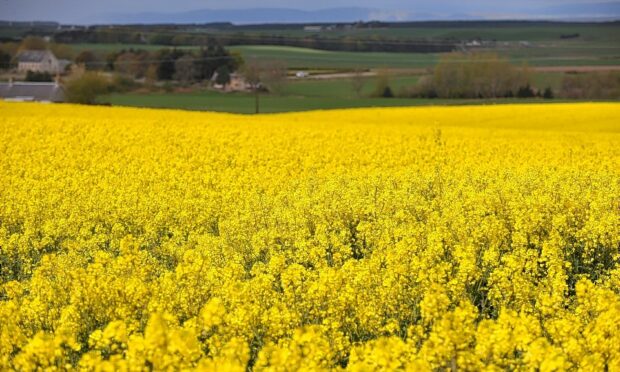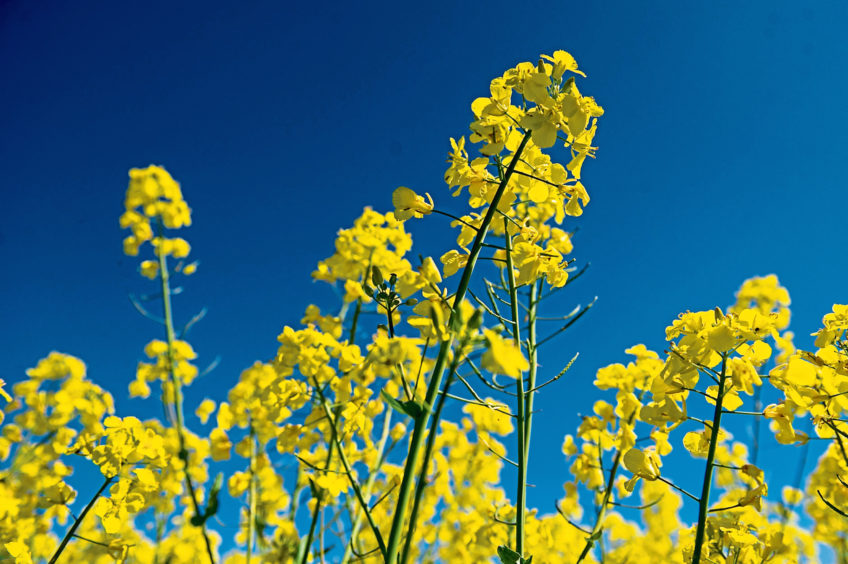Oilseed rape growers are being urged to maximise oil content to optimise bonuses paid on top of yield as UK prices fall from £600 per tonne.
According to ProCam agronomist Daniel Hatchett, he says there is a lot to consider, particularly if an oil bonus pays 1.5% of the crop’s purchase price for every 1% of oil content above 40%.
“The key is to understand what influences oil production so agronomy can be geared accordingly,” said Mr Hatchett.
“Oil content is affected by plant density, the number of pods per plant and the number of seeds per pod. For maximum oil content, photosynthesis must be maximised therefore maintaining the correct amount of green area in the crop is key.”
‘Important period for influencing crop green area is around flowering’
Mr Hatchett said that nitrogen is a prime driver of photosynthetic activity and yield.
He said applying excessive nitrogen to push yield can affect oil contact, while severe sulphur deficiencies can also impact on both seed and oil yield.
“For a tonne of seed yield, 15kg per hectare of sulphur is suggested,” he said. “If sulphur is deficient, as well as having yield implications, the chlorophyll content of seeds is raised and they turn green. This reduces quality for crushers and potentially oil content.
“As well as macronutrients, micronutrients must also be in balance. Manganese deficiency alone can drastically decrease the crop’s ability to photosynthesise, even without visible symptoms. An important period for influencing crop green area is around flowering.”
The canopy can be optimised further by applying a biostimulant treatment containing nutrients and pidolic acid at yellow bud stage.
This treatment enables the crop to use more nitrogen more effectively, helping to promote green leaf retention and chlorophyll content.
Harvesting oilseed rape: ‘it’s about finding a balance’
Mr Hatchett said that late nitrogen in oilseed rape has also been found to push yields and oil content.
“Seed filling in oilseed rape occurs over roughly six weeks, with most oil being laid down during the second half of this,” he added.
“Desiccating or swathing too early risks losing up to 2% a day in yield and compromising oil content. Harvesting too late risks seed losses due to pod shatter so it’s about finding a balance.”
He said that last season’s high oil contents could potentially be attributed to pod sealants being applied separately from desiccation due to the crop’s high value.


Conversation